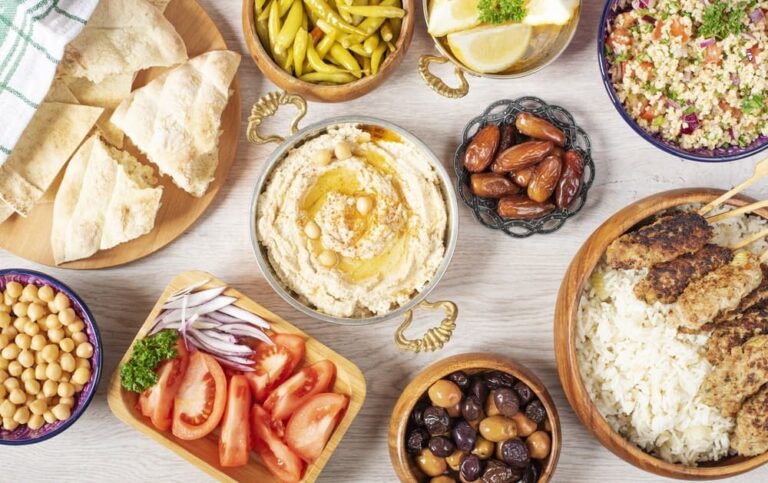Introduction: The Meat Culture in Egypt
Egyptian cuisine is renowned for its diverse and vibrant flavors. While vegetarian and vegan dishes are popular, meat dishes are the backbone of Egyptian cuisine. Egyptians take pride in their meat dishes, combining traditional cooking methods with modern twists to create a unique and irresistible flavor profile. The meat culture in Egypt is so strong that it is not uncommon to see whole lambs being roasted on a spit at special occasions like weddings and religious festivals.
Kofta: The Iconic Egyptian Meat Dish
Kofta is a popular Egyptian meat dish made from ground beef or lamb mixed with spices like cumin and coriander. The mixture is then kneaded and formed into elongated or round patties before being grilled or baked. Kofta can be served in various ways, from being stuffed inside pita bread with vegetables and tahini sauce to being served on a skewer with rice and salad. The dish is a staple in Egyptian cuisine and is often served at family gatherings and street food stalls.
Shawarma: A Middle Eastern Favorite in Egypt
Shawarma is a Middle Eastern meat dish that has been adapted by Egyptian cuisine. The dish is made by marinating slices of meat, typically chicken or beef, in a blend of spices like cumin, coriander, and paprika. The meat is then roasted on a spit and shaved off into thin slices before being served in a pita bread with vegetables and a variety of sauces like tahini and garlic. Shawarma is a popular street food in Egypt and can be found on almost every corner in major cities.
Molokhia: The Meaty Egyptian Stew
Molokhia is a traditional Egyptian stew made from the leaves of the molokhia plant and meat, typically chicken or rabbit. The leaves are first cooked in a broth made from chicken or beef stock, then sautéed with garlic and coriander. The meat is then added to the stew and cooked until tender. The dish is served with rice and can be garnished with fried onions or lemon wedges. Molokhia is a staple in Egyptian households and is often served as a main course during family gatherings.
Feseekh: The Traditional Egyptian Seafood Meat
Feseekh is a traditional Egyptian seafood meat made from salted and fermented mullet fish. The fish is first salted and then left to ferment for several weeks before being served. The dish is typically served during the spring festival of Sham El Nessim and is often eaten with bread and onions. While the dish is an acquired taste for many, it remains a popular delicacy among Egyptians.
Kebab: A Meat Lover’s Delight in Egypt
Kebab is a meat dish popular in Middle Eastern cuisine and is widely consumed in Egypt. The dish is made by marinating chunks of meat, typically beef or lamb, in a blend of spices before being grilled or baked. The meat is then served on a skewer with vegetables and a variety of sauces like tahini and garlic. Kebab is a popular street food in Egypt and can be found in almost every city.
Hamam Mahshi: The Egyptian Stuffed Pigeon Dish
Hamam Mahshi is a traditional Egyptian dish made from stuffed pigeon. The bird is first cleaned and then stuffed with a mixture of rice, herbs, and spices before being roasted or baked. The dish is served with a side of vegetables and can be garnished with lemon wedges. While the dish is not commonly found in restaurants, it is a staple in Egyptian households during religious festivals and special occasions.
Hawawshi: The Egyptian Meat Pie with a Crunchy Twist
Hawawshi is a popular Egyptian meat pie made from ground beef or lamb mixed with spices like cumin and coriander. The mixture is then stuffed inside a pita bread and baked until crispy. The dish is often served with a side of pickled vegetables and tahini sauce. Hawawshi is a popular street food in Egypt and can be found in almost every city. The dish is loved for its crunchy exterior and juicy meat filling.
In conclusion, meat dishes are an essential part of Egyptian cuisine and are a testament to the country’s rich culinary heritage. From kebab to Hamam Mahshi, the meat dishes in Egypt are diverse, flavorful, and loved by locals and tourists alike.

